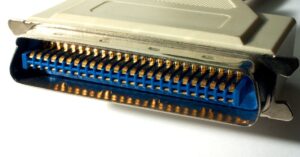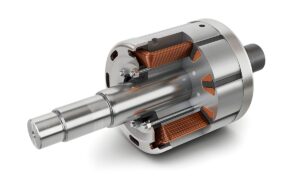NEC Article 392 describes cable trays, their components, proper connection methods for cable trays, and when and where they are allowed and not allowed. It also focuses on construction and installation practices for cable trays.

The following is a summary of the most important points contained in Article 392 of the National Constitution:
Cable tray allowed
Cable trays can be used as a support system for various wiring routes, including service conductors, feeders, branch circuits, communication circuits, control circuits, and signal circuits (392.3).
Cable trays are not only used in industrial facilities, cable trays are permitted to be used in any type of building or structure, provided they comply with the relevant mounting and support requirements outlined in NEC Article 392.
According to NEC Section 392.10(B)(1), the smallest single conductor size allowed to be installed in a cable tray is 1/0 AWG.
For the installation of single-conductor cables in sizes from 1/0 AWG to 4/0 AWG in industrial facilities, the NEC specifies the maximum allowable run spacing for a cable tray. According to NEC Section 392.10(B)(1)(c), the maximum allowable run spacing for cable trays supporting these sizes of single-conductor cable is 9 inches (229 mm).
Multi-conductor cables allowed in trays
Some of the multi-conductor cables allowed for use according to NEC 392.3 are:
Type AC (Armored Cable) Type MC (Metal Sheathed Cable) Type MI (Mineral Insulated Cable) Type TC (Tray Cable) Type PLTC (Power Limited Tray Cable) Type ITC (Instrument Tray Cable) Type MV (Medium Voltage Cable) Type SE (Service Entrance Cable) Type USE (Underground Service Entrance Cable)
Communication and control cables:
Type CM (Communication Cable) Type CMG (General Purpose Communication Cable) Type CMP (Plenum Communication Cable) Type CMR (Communication Riser Cable) Type CL2 (Category 2 Cable) Type CL3 (Category 3 Cable)
Fiber optic cables:
OFC type (Optical Fiber Conductor Cable) OFN type (Optical Fiber Non-Conductor Cable) OFNP type (Optical Fiber Non-Conductor Bundled Cable) OFNR type (Optical Fiber Non-Conductor Upstream Cable)
Cable and connector installation
Cables rated for different voltages may be installed in the same drawer, but those operating at voltages above 600 V must be of type MC or separated by a solid barrier from cables of lower voltage.
Cables rated 600 volts or less may be installed together in the same cable tray without additional separation, provided they meet NEC requirements for fill and support.
392.30 Insurance and support
Cables and connectors must be secured to the cable tray at intervals according to the installation instructions.
For non-horizontal runs, cables must be securely fastened to the cross members of the cable tray.
Supports shall be provided to prevent stress on cables where they enter the raceways from cable tray systems.
Cable ties used must be listed and identified in order to secure and support them.
in NNCYou can shop for all types of cables for cable trays.



